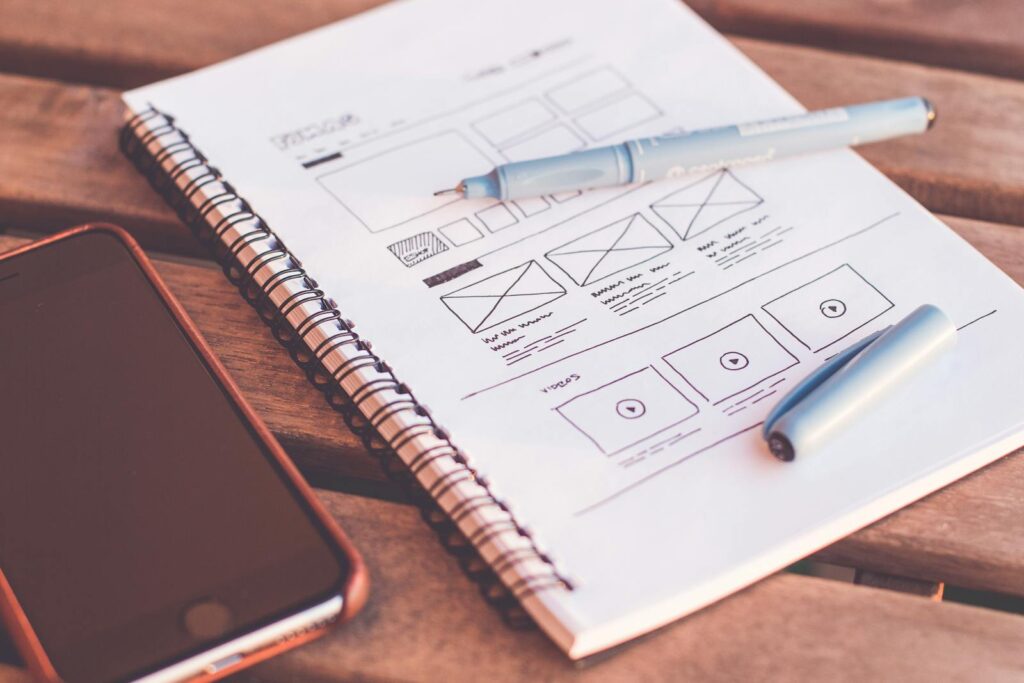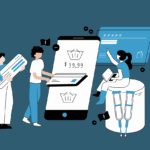Responsive design is tough. You’re constantly tweaking layouts, media queries, and breakpoints to make sure your website looks good on everything from a tiny phone to a massive desktop monitor. It’s a time sink and, honestly, sometimes feels like a neverending battle. But what if AI could actually help? Not just a little bit, but really take some of the load off?
Getting Started with AI-Powered Responsiveness
So, where do you even begin integrating AI into your responsive design workflow? Well, first, don’t think you need to build your own AI from scratch. That’s just crazy, unless you’re, like, a Google-level engineer. Instead, look at existing tools and services that offer AI-driven features. Many of these tools integrate with existing design platforms.
A good starting point is understanding what these tools can actually do. Some can automatically generate responsive layouts based on content. Others can predict user behavior and adjust the design accordingly. And some can even help you choose the right images and optimize them for different devices.
Common Tools: Some popular options include AI-powered website builders, image optimization services that use AI, and even some advanced CSS frameworks that are starting to experiment with AI-driven features. It pays to do your research and see what fits your budget and technical skill. Don’t go spending a lot of money before you figure out what you actually need. One that’s got buzz lately is called something like “ResponsivAI” – worth looking into maybe? I saw it at a conference last year.
What People Get Wrong: A big mistake people make is expecting AI to completely replace the designer. That’s not going to happen anytime soon. AI is a tool, not a replacement. You still need a designer’s eye to ensure the overall aesthetic and user experience are on point. Another issue? Over-reliance. Don’t just blindly trust what the AI spits out. Always double-check and make sure it makes sense.
Tricky Parts: Getting the AI to understand your specific design goals can be challenging. You might need to provide detailed instructions or examples to get the results you want. Also, dealing with unexpected outcomes is part of the process. AI isn’t perfect, and it will sometimes produce weird or buggy layouts. And honestly, sometimes their is just no way to fix it but manually.
Small Wins: Seeing the AI automatically adjust image sizes and resolutions based on the screen size is a huge win. So is having it generate different layout options for you to choose from. These small wins can save you hours of manual work, giving you more time to focus on the bigger picture.
Understanding AI Algorithms for Design Adaptation
Okay, let’s dive a little deeper into the types of AI algorithms used in responsive design. Don’t worry; we won’t get too technical. Think of it like this: these algorithms are essentially sets of rules that the AI uses to make decisions about how your website should look and behave on different devices.
Types of Algorithms: Some common algorithms include machine learning (where the AI learns from data), neural networks (which mimic the structure of the human brain), and genetic algorithms (which evolve solutions over time). Each type has its strengths and weaknesses, but they all share the goal of creating a better user experience.
How They Work: Machine learning algorithms, for example, can learn which layout works best on different devices by analyzing user behavior data. Neural networks can be used to recognize patterns in images and optimize them for different screen sizes. And genetic algorithms can be used to generate a variety of layout options and select the ones that perform the best.
Real Example: Imagine an e-commerce site. The AI could analyze user data to see that mobile users are more likely to scroll through product images than read detailed descriptions. Based on this data, the AI could automatically adjust the layout to prioritize images on mobile devices.
Common Tools: TensorFlow, PyTorch (even though those are usually associated with bigger projects you can adapt them.) Thing is, if you’re at the point of directly using these you need to be a heavy-duty coder. Much easier to use a wrapper or framework built on them.
What People Get Wrong: Thinking you need to understand the inner workings of these algorithms to use them effectively. You don’t. Most AI-powered design tools abstract away the complexity, allowing you to focus on the design itself.
Tricky Parts: Feeding the AI enough data to make accurate predictions. The more data you provide, the better the AI will perform. But gathering that data can be time-consuming and expensive.
Small Wins: Seeing the AI automatically adjust the font size and line height on different devices to improve readability. It’s a simple change, but it can make a big difference in the user experience.
Image Optimization with AI
Images are often the biggest performance bottleneck on websites, especially on mobile devices. AI can help by automatically optimizing images for different screen sizes and resolutions, reducing file sizes without sacrificing quality.
How AI Optimizes Images: AI-powered image optimization tools use various techniques, such as lossy and lossless compression, adaptive resizing, and content-aware encoding. Lossy compression reduces file sizes by removing some data from the image, while lossless compression reduces file sizes without losing any data. Adaptive resizing adjusts the image size based on the screen size, and content-aware encoding prioritizes the most important parts of the image.
Common Tools: ImageOptim, TinyPNG, and Kraken.io are all popular options. Many cloud storage services like AWS S3 and Google Cloud Storage also offer built-in image optimization features.
What People Get Wrong: Thinking that all image optimization tools are created equal. Some tools are better than others at preserving image quality while reducing file sizes. It’s important to test different tools and see which one works best for your images.
Tricky Parts: Finding the right balance between image quality and file size. You want to reduce file sizes as much as possible without making the images look blurry or pixelated. That’s why the “content aware” parts of algorythms are so powerful, because there is a lot of math going on behind the scenes. It’s wild.
Small Wins: Seeing a significant reduction in page load times after optimizing your images. This can lead to a better user experience and improved search engine rankings.
AI-Driven Layout Adjustments
Beyond image optimization, AI can also help with layout adjustments. It can analyze user behavior and automatically adjust the layout of your website to improve engagement and conversions.
How AI Adjusts Layouts: AI-powered layout tools use machine learning to identify patterns in user behavior. They can track things like where users click, how long they stay on a page, and what devices they use to access your website. Based on this data, the AI can automatically adjust the layout to highlight the most important content and improve the user experience.
Common Tools: Some website builders offer built-in AI-driven layout adjustment features. There are also third-party tools that can integrate with your existing website.
What People Get Wrong: Expecting the AI to magically create the perfect layout without any input from you. You still need to provide the AI with clear goals and guidelines. For example, you might tell the AI to prioritize certain content or to optimize the layout for mobile devices.
Tricky Parts: Ensuring that the AI-driven layout adjustments align with your overall design aesthetic. You don’t want the AI to make changes that clash with your brand or create a disjointed user experience.
Small Wins: Seeing an increase in conversions after implementing AI-driven layout adjustments. This can be a sign that the AI is successfully optimizing the layout for user engagement.
Predictive Design with AI
Predictive design takes AI-driven layout adjustments a step further. Instead of just reacting to user behavior, predictive design anticipates what users will do and adjusts the layout accordingly.
How Predictive Design Works: Predictive design uses machine learning to predict user behavior based on historical data. For example, it might predict that a user who has previously purchased a certain product is likely to be interested in similar products. Based on this prediction, the AI could automatically display related products on the user’s screen.
Common Tools: Predictive analytics platforms and marketing automation tools often include predictive design features.
What People Get Wrong: Thinking that predictive design is always accurate. Predictions are just that – predictions. They’re not always correct. It’s important to monitor the results of your predictive design efforts and make adjustments as needed.
Tricky Parts: Getting access to enough historical data to make accurate predictions. The more data you have, the better the AI will perform.
Small Wins: Seeing an increase in sales or engagement after implementing predictive design features. This can be a sign that the AI is successfully anticipating user needs.
Testing and Iteration
Even with AI, testing is crucial. Don’t just assume that the AI-generated layouts are perfect. You need to test them with real users and iterate based on their feedback.
How to Test: Use A/B testing to compare different layouts and see which ones perform the best. Also, gather user feedback through surveys and usability testing.
Common Tools: Google Optimize, Optimizely, and Crazy Egg are all popular A/B testing tools. SurveyMonkey and Qualtrics are good options for gathering user feedback.
What People Get Wrong: Not testing frequently enough. Testing should be an ongoing process, not a one-time event.
Tricky Parts: Interpreting the results of your tests. It’s not always easy to determine why one layout performs better than another.
Small Wins: Identifying a simple change that leads to a significant improvement in user engagement.
Ethical Considerations of AI in Design
It’s important to consider the ethical implications of using AI in design. For example, AI algorithms can be biased, leading to discriminatory outcomes. You need to ensure that your AI systems are fair and unbiased.
Bias in AI: AI algorithms are trained on data, and if that data is biased, the AI will also be biased. For example, if the data used to train an AI image recognition system primarily includes images of white people, the system may be less accurate at recognizing people of color.
Common Tools: There are tools and techniques you can use to mitigate bias in AI, such as data augmentation and fairness metrics.
What People Get Wrong: Thinking that AI is inherently objective. AI is a tool created by humans, and it reflects our biases.
Tricky Parts: Identifying and mitigating bias in AI algorithms. It’s a complex and ongoing process.
Small Wins: Creating AI systems that are fair and unbiased.
Future Trends
AI in responsive design is still in its early stages, but it has the potential to revolutionize the way we create websites. Expect to see more sophisticated AI-powered design tools in the future.
Emerging Technologies: Some emerging technologies include generative design, which uses AI to automatically generate a variety of design options, and augmented reality, which overlays digital information onto the real world.
Common Tools: Keep an eye on new tools and platforms that are incorporating these technologies.
What People Get Wrong: Underestimating the potential of AI to transform design.
Tricky Parts: Keeping up with the rapid pace of innovation in the field of AI.
Small Wins: Being an early adopter of AI-powered design tools.
Accessibility and AI
AI can play a huge roll in making websites more accessible. From automatically generating alt text for images to ensuring proper color contrast, AI can help designers create websites that are usable by people with disabilities. Their are a lot of ways this could go, but some of them are easier and more powerful then anyone expects.
AI and Alt Text: AI can analyze images and automatically generate descriptive alt text, making them accessible to users with visual impairments.
Color Contrast: AI can analyze the color contrast on your website and identify areas where it doesn’t meet accessibility standards.
Common Tools: There are several AI-powered accessibility tools available, such as WAVE and axe.
What People Get Wrong: Thinking that AI can completely automate accessibility. While AI can help, it’s still important to manually review your website to ensure it’s fully accessible.
Tricky Parts: Getting AI to understand the context of an image and generate accurate alt text.
Small Wins: Creating websites that are more accessible to everyone.
Keeping Up with AI Advancements
The field of AI is evolving rapidly. It’s important to stay up-to-date on the latest advancements and how they can be applied to responsive design.
Follow the Experts: Follow leading AI researchers and developers on social media and attend industry conferences.
Read Industry Publications: Subscribe to newsletters and read industry publications to stay informed about the latest trends.
Common Tools: Use tools like Google Alerts to track mentions of AI and responsive design.
What People Get Wrong: Thinking that they can learn everything they need to know about AI in a single day.
Tricky Parts: Separating hype from reality in the field of AI.
Small Wins: Continuously learning and improving your understanding of AI.
Quick Takeaways
- Start small. Don’t try to implement AI everywhere at once. Pick one area to focus on, like image optimization.
- Experiment. Try out different AI-powered design tools and see which ones work best for you.
- Don’t be afraid to fail. AI isn’t perfect, and you’re going to make mistakes. Learn from them and keep trying.
- Keep feedback loops short and honest.
- Don’t just rely on tools — talk to people. Users and customers can reveal flaws faster.
- Focus on solving real problems. Don’t just use AI because it’s cool. Use it to solve specific design challenges.
- Remember design basics. AI isn’t a magic wand to wave at a bad user experience.
FAQs
Q – What if my action doesn’t work on some images?
A – Short answer, it happens. Try to identify what makes those images different and adjust the action accordingly. Maybe they’re a different size or resolution, or maybe they have different layers.
Q – Is this going to make all designers obselete?
A – Nope. A.I. will augment not replace the need for people who know and understand design. Think of it as a copilot.
Q – Where do I learn the underlying skills?
A – Start with basic HTML, CSS, and JavaScript. From there, explore machine learning and data science concepts. But dont worry too much if that feels too daunting!
Q – Do I need a fancy computer?
A – Not really. Most of the AI processing happens in the cloud, so you don’t need a super powerful machine. Just a decent internet connection.
Conclusion
AI is changing responsive design, and will keep changing it. While it’s not a silver bullet, it can be a powerful tool for creating better websites. The key is to approach it with the right mindset, use it strategically, and never stop learning.
I had to learn the hard way that AI isn’t a replacement for good design principles. I once relied too heavily on an AI-powered layout tool, and the result was a website that looked technically impressive but felt completely soulless. That’s when I realised that AI is just a tool, and it’s up to the designer to wield it effectively.
It’s an exciting time to be a designer. We have access to tools and technologies that were unimaginable just a few years ago. And with AI, we can create websites that are more responsive, more accessible, and more engaging than ever before. So, embrace the change, experiment with AI, and see what you can create.


